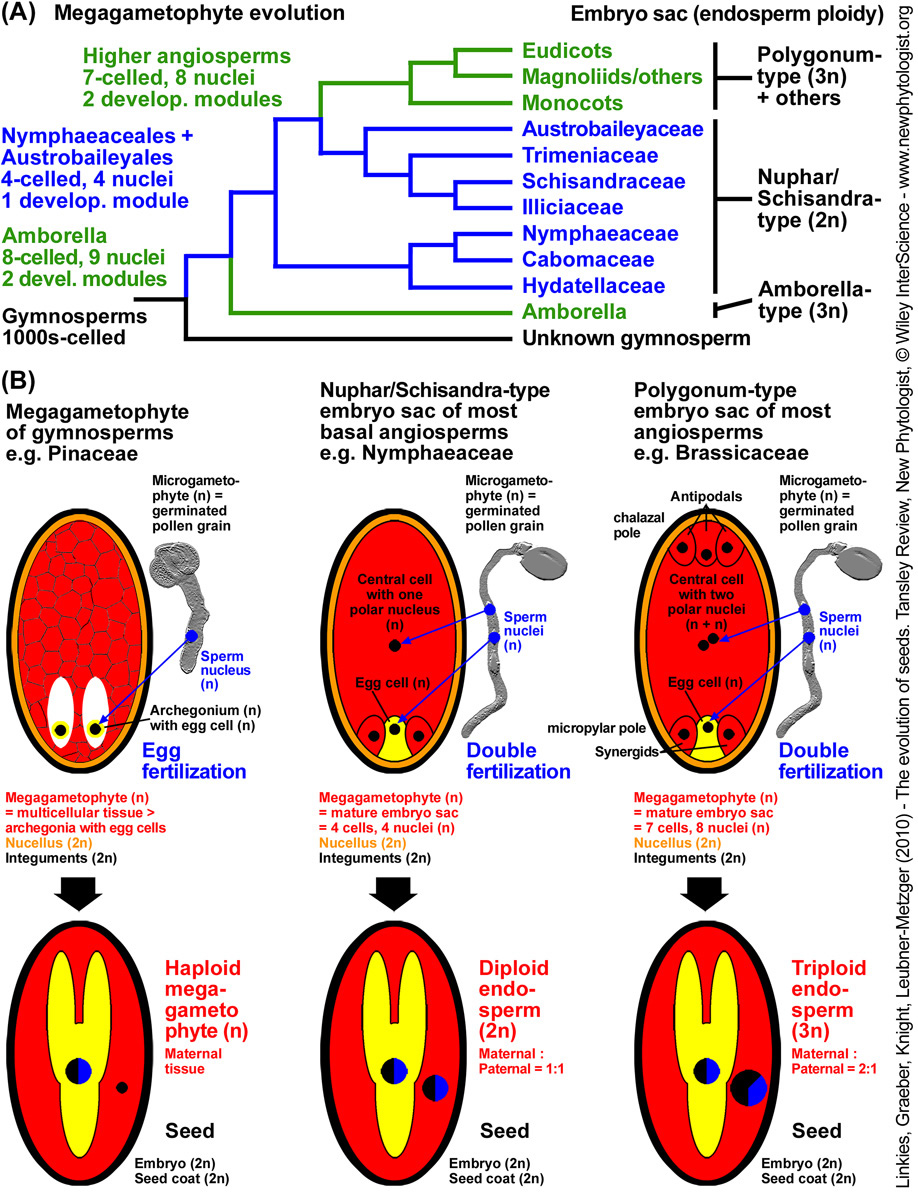Tansley Review - New Phytologist 186: 817-831 (2010)
The evolution of seeds
Biological Sciences Department, California Polytechnic State University, San Luis Obispo, 7 CA 93401, USA (C.A.K.)
*Corresponding authors: C.A.K., G.L.-M.
Received December 21, 2009; accepted February 23, 2010; published online April 12, 2010
DOI 10.1111/j.1469-8137.2010.03249.x

Figure 2.
Gymnosperm and angiosperm megagametophyte fertilization and the evolutionary history of the angiosperm embryo sac and endosperm.
(A) Best hypothesis (Friedman & Ryderson, 2009) for the early evolution of the angiosperm megagametophyte.
(B) Megagametophyte structure, fertilization and seed development of gymnosperms and angiosperms. The first angiosperms may have produced four-nucleate, four-celled megagametophytes (one developmental module). Double fertilization of the uninucleate haploid central cell in Nymphaeales and Austrobailyales yields diploid endosperms (Nuphar/Schisandra-type). In the common ancestor of all angiosperms except Amborella, Nymphaeales and Austrobailyales, insertion of a nuclear migration event at the two-nucleate syncytial stage led to initiation of two developmental modules and formation of a seven-celled, eight-nucleate female gametophyte (Polygonum-type). Modular duplication also occured independently in the lineage to the Amborella-type embryo sac; in addition asynchronous cell division in the micropylar module yields a third synergid in the Amborella trichopoda endosperm (Friedman & Ryderson, 2009). In addition to endosperm, perisperm in basal angiosperm seeds is known for Hydataceae, Nymphaeaceae, Cabomaceae and Trimeniaceae.
| Article in PDF format (900 KB) |
|
|
|
The Seed Biology Place |
Webdesign Gerhard Leubner 2000 |